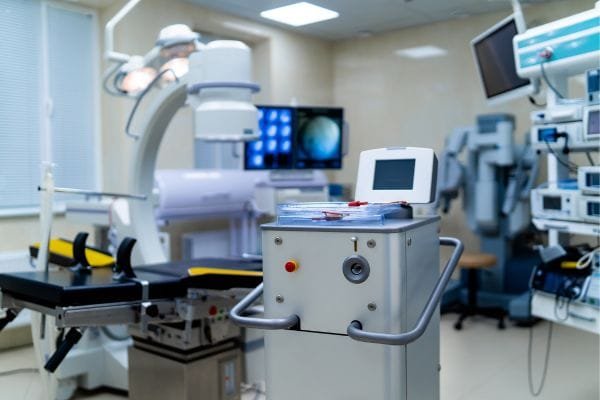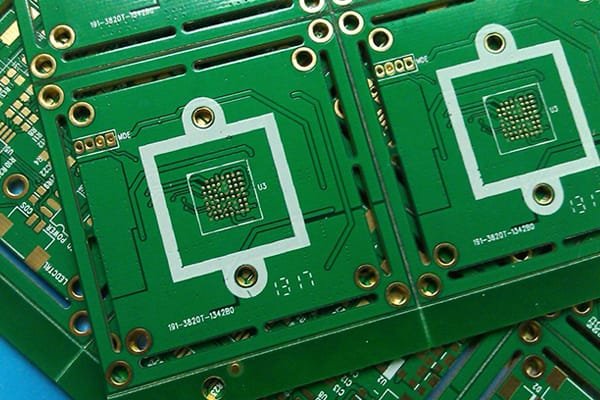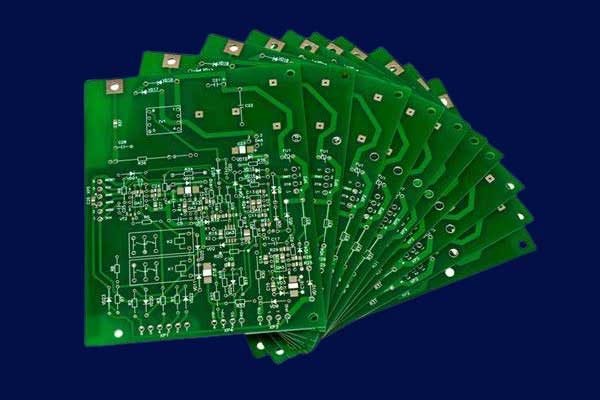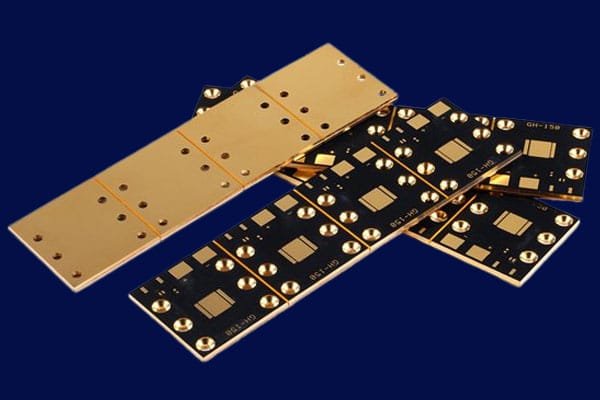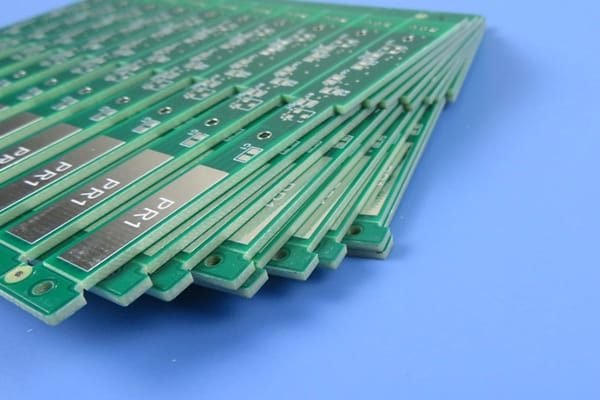
PCB Electronic Manufacturing Services
PCB for Consumer Electronics
JHYPCB is a leading PCB manufacturing and assembly provider with extensive experience in consumer electronics. Learn about our expertise in PCB manufacturing and assembly, as well as the applications of PCBs in the consumer electronics industry.

Experienced PCB Manufacturing and Assembly for Consumer Electronics
JHYPCB is an experienced PCB manufacturing and assembly provider for consumer electronics products. We have years of industry experience and technical expertise, delivering high-quality, high-performance, and customized PCB manufacturing and assembly services with a focus on customer satisfaction. With advanced production equipment and reliable quality control systems, we have a professional team that provides comprehensive technical and after-sales support to ensure the success of our customers’ projects. Whether you require PCB manufacturing or assembly, we can provide optimal solutions tailored to your specific requirements to help you achieve success.
What is a PCB?
A printed Circuit Board is a plate-like board made of insulating material and coated with conductive materials, which can mechanically support and electrically connect various electronic components. The conductive pathways on the board can be traced back to the circuitry design, providing a platform for connecting different electronic components.
PCBs usually comprise a substrate, copper layer, solder mask, and silkscreen. The substrate is typically made of fiberglass or other insulating material that provides rigidity and electrical insulation. The copper layer, consisting of a thin layer of copper foil, is etched to create conductive pathways based on the circuitry design. The solder mask is a layer of polymer that protects the copper layer from oxidation and serves as a color identification tool for the board. Finally, the silk screen is an additional protective layer that prints component information and reference designators on the board to help identify individual components during assembly.

Turnkey Servies - Prototyping to Production
JHYPCB provides turnkey services for consumer electronics PCB projects, including rapid prototyping, high-quality PCB manufacturing, assembly, and component procurement. Our comprehensive services ensure that customers receive fully functional PCBs that meet their requirements, all while saving time and resources.
What are the Applications of PCB in Consumer Electronics?
PCBs have wide-ranging applications in consumer electronics due to their ability to provide a stable and reliable platform for electronic components. Consumer electronic goods typically require PCBs for their functionality, as they provide a medium for the interconnection of electronic circuits and components. Some examples of consumer electronics where PCBs are widely used include smartphones, tablets, laptops, televisions, cameras, audio and video players, gaming consoles, and various home appliances.
In smartphones, PCBs serve as the backbone of the entire system, connecting different components such as processors, sensors, and memory chips. In televisions, PCBs connect the display panel with the audio-visual system while providing support for audio, video, and other signal-processing circuits. In-home appliances such as washing machines and refrigerators, PCBs provide control and sensing functions for the motor, temperature sensors, and other electrical components.
Overall, PCBs play an essential role in modern consumer electronics due to their high reliability, compact size, and cost-effectiveness, making them indispensable components in designing and manufacturing a wide range of consumer electronics products.
What is the Consumer Electronics?
Consumer electronics refer to electronic devices designed and manufactured specifically for personal or household use. These products typically utilize low-cost materials and components, and feature characteristics such as ease-of-use, portability, multiplicity of functions, and relatively low prices. Examples of consumer electronics products include smartphones, tablets, gaming consoles, digital cameras, audio equipment, televisions, home appliances, wireless routers, among others. The consumer electronics market is highly competitive, requiring constant innovation and improvement by manufacturers to meet changing market demands and consumer expectations.
MAJOR CHALLENGES FOR CONSUMER ELECTRONICS
The consumer electronics market is highly competitive, necessitating products to have higher performance, smaller form factors, and lower costs. Designers are typically required to compactly arrange components on PCBs while maintaining signal integrity and stability, as well as ensuring the reliability and durability of the PCBs. Additionally, there are other challenges that consumer electronics products face, such as rapidly changing technology trends, shorter product lifecycles, increasing environmental regulations and concerns, and rising consumer expectations regarding product quality and value. As a result, manufacturers need to constantly innovate and improve their products to meet these challenges and keep pace with market demands.
Role of PCBs in Consumer Electronics
PCBs play a critical role in consumer electronics products by providing a platform for electronic components to be mechanically supported and electrically connected. The compact arrangement of components on PCBs allows for efficient use of space, reducing the size and weight of consumer electronics products. PCBs also help ensure signal integrity and stability, minimizing noise and interference that can negatively affect device performance. Moreover, PCBs provide a level of durability and protection for electronic components, helping protect them from damage caused by environmental factors such as heat, humidity, and vibration.
In addition to their functional benefits, PCBs also enable customization and flexibility in design, allowing designers to tailor a PCB’s layout and configuration to meet specific product requirements. This enables manufacturers to produce a variety of different consumer electronics products with unique features and capabilities suitable for diverse market segments and applications.
Common Types of PCBs in Consumer Electronics
Single-Sided PCB – A single-sided PCB is a type of PCB that has a copper layer on one side and the electronic components mounted on the other side. It is commonly used for simple designs, low-cost products, and ease of maintenance.
Double-Sided PCB – A double-sided PCB has copper layers on both sides of the board with vias that connect the two layers. This allows for more complex circuit designs and more flexibility in component placement, making it ideal for consumer electronics products that require a greater level of functionality but are still cost-effective to manufacture.
Multi-Layer PCB – A multi-layer PCB consists of multiple layers of substrate material with copper layers sandwiched in between. This type of PCB can support even more complex circuits, providing a higher level of performance while maintaining a small form factor. Multi-layer PCBs are typically used in high-end consumer electronics products, such as smartphones and tablets.
Flexible PCB – A flexible PCB is a type of PCB made of thin, flexible plastic material and is designed to bend or fold to fit specific product requirements. This type of PCB enables designers to create products with unique shapes and form factors, such as wearable devices or curved displays.
Rigid-Flex PCB – A rigid-flex PCB combines elements of both flexible and rigid PCBs, allowing for a combination of flexibility and durability. These boards have a built-in section of flexible PCB that connects different sections of rigid PCBs. They are commonly used in products that require a high degree of reliability and resistance to mechanical stress, such as medical devices and aerospace applications.
High-Frequency PCB – These types of PCBs are designed to operate at high frequencies and are typically used in wireless communication applications such as Wi-Fi routers or cellular devices. They use specialized materials and designs to ensure signal integrity and minimize interference.
HDI (High Density Interconnect) PCB – HDI PCBs are designed with very small circuitry features, allowing for a higher density of components and smaller form factors. These boards are commonly used in smartphones, tablets, and other portable electronic devices where space is limited.
Metal Core PCB – These types of PCBs use a metal core instead of traditional substrate material, providing better heat dissipation and thermal management capabilities. They are commonly used in products that generate a lot of heat, such as LED lighting and power electronics.
Aluminum PCB – Aluminum PCBs are designed with an aluminum core instead of traditional substrate material such as fiberglass or plastic. They offer excellent heat dissipation properties and are commonly used in LED lighting and power electronics products.
Let's Work Together
JHYPCB's PCB manufacturing and assembly services in consumer electronics
JHYPCB is a professional company specializing in PCB manufacturing and assembly services. As a leading PCB manufacturer, we understand the importance and significance of PCBs in consumer electronics products and provide high-quality PCBs and assembly services that conform to industry standards. We offer customized manufacturing solutions for single-sided, double-sided, and multilayer PCBs and complementary services such as component sourcing and SMT assembly.
Below is the list of services we offer along with their details:
PCB Manufacturing: We specialize in providing high-quality PCBs, including single-sided, double-sided, and multilayer rigid boards or flexible PCBs, based on customer specifications. Our production capabilities include surface finishes such as HASL, ENIG, OSP, and more.
PCB Assembly: We provide both through-hole and SMT assembly services for PCBs, which include component placement, soldering, inspection, and testing. Our team ensures that all assembled PCBs meet the highest quality standards.
Components Procurement: As part of our one-stop service, JHYPCB offers component sourcing and procurement services from reliable suppliers to ensure the quality of each component used in the PCB assembly process.
PCB Design Review: Our experienced engineers can help review PCB designs to ensure they meet the requirements for manufacturability, functionality, and performance.
Testing and Inspection: JHYPCB conducts extensive testing and inspection procedures throughout the manufacturing and assembly to ensure that all PCBs meet the highest quality standards.
Packing and Shipping: We provide comprehensive packaging and shipping services to ensure PCBs reach customers safely and on time.
Emerging Trends in Consumer Electronics Market
According to recent market research, the global consumer electronics market was valued at USD 1.35 trillion in 2020 and is expected to grow at a compound annual growth rate (CAGR) of 7.5% from 2021 to 2028. The growing demand for technologically advanced products, increasing disposable income, and the proliferation of the internet and e-commerce platforms are some of the factors driving market growth.
1. Smart Home Devices
Smart home devices, which use Internet of Things (IoT) technology to connect and control different household devices and appliances, are becoming increasingly popular. These devices can be controlled remotely through a smartphone app or a voice-controlled virtual assistant, providing convenience and enabling users to save energy and reduce costs.
2. Wearable Technology
Wearable technology, such as smartwatches and fitness trackers, is gaining popularity due to their ability to monitor health and fitness metrics, track daily activity levels, and provide access to important notifications and messages. The growing awareness of health and fitness, along with advancements in sensor technology, is driving the demand for these devices.
3. Virtual and Augmented Reality
Virtual reality (VR) and augmented reality (AR) technologies are being used in gaming, entertainment, education, and other industries. With the development of more powerful processors and high-resolution displays, these technologies are becoming more immersive and accessible to consumers.
4. 5G Connectivity
5G technology promises faster download and upload speeds, reduced latency, and improved network reliability. This enables more seamless streaming of high-quality video, gaming, and other data-intensive applications. The increasing adoption of 5G-enabled smartphones and devices is expected to drive growth in the consumer electronics market.
5. Sustainability
Consumers are becoming more conscious of the environmental impact of their purchases and are demanding more sustainable products. This trend is driving the development of eco-friendly consumer electronics that use recyclable materials, have low energy consumption, and are designed for longevity and repairability.



